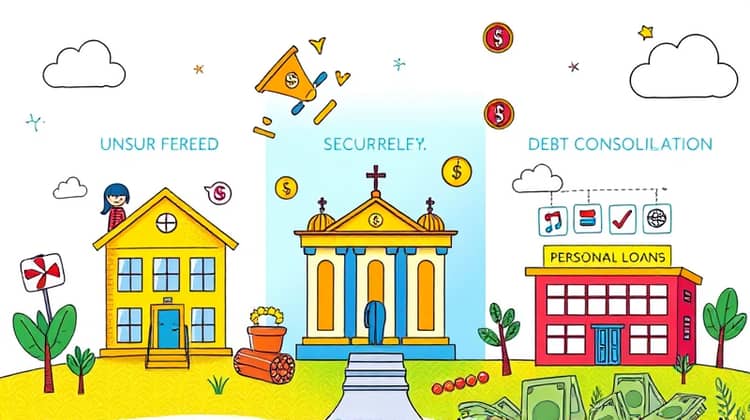Understanding the financial landscape can be confusing, especially when navigating options like personal loans and lines of credit. Both financial tools serve the purpose of borrowing money, yet they come with distinct features, benefits, and uses that set them apart.
In this blog post, we will delve into the differences between personal loans and lines of credit, exploring their definitions, applications, benefits, types, and then help you decide which option might be best suited for your financial needs.
What is a Personal Loan?

A personal loan is a type of installment loan that allows borrowers to receive a lump sum of money upfront, which they agree to pay back in fixed monthly installments over a predetermined period. These loans are typically unsecured, meaning no collateral is required, but they often come with higher interest rates compared to secured loans.
Personal loans can be utilized for a variety of purposes, including consolidating debt, funding major purchases, or covering unexpected expenses. The clear structure of regular payments makes them a popular choice for individuals seeking to manage their finances effectively.
Personal Loan Applications

Applying for a personal loan usually involves a straightforward process, starting with finding a lender that offers favorable terms. This can be a bank, credit union, or online lender, and it's essential to compare interest rates and terms to secure the best deal.
Once a lender has been selected, the applicant needs to fill out a loan application, providing personal information including income, employment history, and credit score. The lender will assess this information along with the applicant’s creditworthiness to determine if they qualify for the loan and what interest rate will apply.
Approval times can vary significantly by lender, but many online lenders can provide quick decisions, while traditional banks may take longer. It’s crucial for applicants to ensure they only apply for loans they are likely to be approved for, as multiple applications can impact credit scores.
- Gather necessary documentation (income details, identity verification)
- Check your credit score for a better understanding of your financial status
- Research lenders to find the best interest rates and terms
Benefits of Personal Loans

Personal loans offer several benefits that can make them an appealing choice for borrowers seeking access to funds. One of the main advantages is their predictability – fixed payments over a set term can aid in budgeting and financial planning.
- Lower interest rates compared to credit cards
- No collateral required for most personal loans
- Flexibility in usage for various personal expenses
Types of Personal Loans

There are several types of personal loans available, catering to different needs and circumstances.
- Unsecured personal loans
- Secured personal loans
- Debt consolidation loans
What is a Line of Credit?

A line of credit is a flexible borrowing option that allows individuals to access funds up to a specified limit, with the ability to withdraw amounts as needed. Unlike a personal loan, which disburses the full amount at once, a line of credit operates similarly to a credit card, granting access to funds as long as the credit limit is not exceeded.
Borrowers are only required to pay interest on the amount drawn, rather than the total credit limit. This makes lines of credit particularly useful for ongoing expenses and projects, where the total cost isn't clear upfront.
Benefits of a Line of Credit

Lines of credit come with distinct benefits, especially for borrowers looking for flexibility in their financing options.
- Only pay interest on the amount used
- Ability to withdraw funds repeatedly without reapplying
- Easier access to cash for emergencies
Types of Lines of Credit

Just like personal loans, lines of credit come in various forms to suit different borrowing needs.
- Personal lines of credit
- Home equity lines of credit (HELOCs)
- Business lines of credit
Key Differences Between Loans and Lines of Credit

There are several key distinctions between personal loans and lines of credit that are essential for potential borrowers to understand.
- Personal loans provide a lump-sum payment with fixed repayment terms
- Lines of credit offer a revolving balance with flexible borrowing amounts
- Interest on personal loans is paid on the entire loan amount; with lines of credit, interest is paid only on what is used
Loan or Line of Credit?

Choosing between a personal loan and a line of credit largely depends on your financial needs and spending habits. If you require a specific amount for a set purpose, like a major purchase or debt consolidation, a personal loan can provide a structured repayment plan that may be beneficial for budgeting.
On the other hand, if you anticipate ongoing or fluctuating expenses, a line of credit may offer the flexibility needed to borrow as costs arise, allowing for more controlled interest payments. It is also advantageous in emergencies or unexpected expenses that can arise, as you have immediate access to funds.
Ultimately, assessing your financial situation, understanding the purpose of the borrowing, and evaluating both options will enable you to make an informed decision that aligns with your long-term financial strategies.














